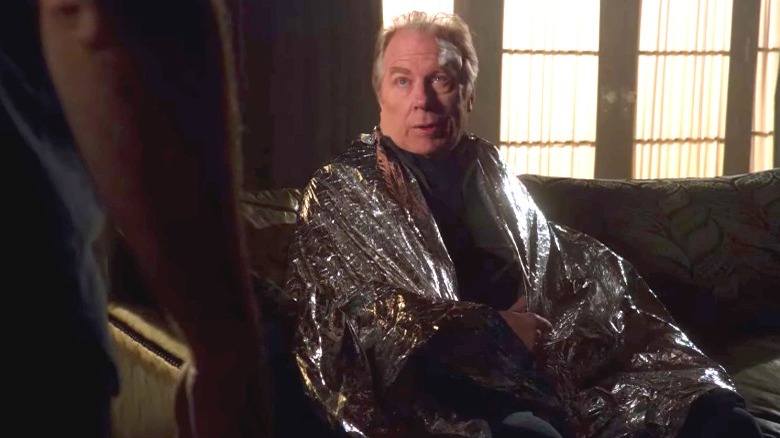Is Chuck's Electricity Allergy In Better Call Saul A Real Condition?
Created by Vince Gilligan and Peter Gould, "Better Call Saul" — the spinoff to the highly acclaimed drama "Breaking Bad" — premiered in 2015 and is now nearing its sixth and final season. The series shows how Jimmy McGill (Bob Odenkirk), a former con artist turned lawyer, becomes the shady and greedy criminal defense lawyer we know as Saul Goodman.
Throughout the series, we see many contributing factors to Jimmy's eventual transformation into Saul. In the first few seasons, one of the biggest factors is his tense relationship with his brother, Chuck (Michael McKean), who doesn't believe Jimmy capable of being a proper lawyer and consistently undermines him. For example, we find out in Season 1 that after Jimmy passes the bar exam and tries to get an attorney position at HHM — where Chuck is a partner and where Jimmy had been working in the mailroom — Chuck asks another partner, Howard (Patrick Fabian), to reject him for the position.
Cementing Chuck as even more of a villain, he blatantly sabotages Jimmy while he's acting as his caretaker, as Chuck has been on leave of absence from his job due to his "electromagnetic hypersensitivity." Chuck describes his disease in Season 3, Episode 5, titled "Chicanery," calling it "an acute allergy to electromagnetism." In other words, he has a reaction to being near any electronics, causing Jimmy to leave his cell phone and any other devices outside when he visits Chuck.
After seeing the events of "Better Call Saul," many viewers may be wondering the same thing: is electromagnetic hypersensitivity a real thing?
Chuck's condition occurs in real life — but it's controversial
In the series, Chuck's disease is so severe that he ends up in the hospital on more than one occasion. In one of those instances, a doctor tries to convince Jimmy to place Chuck in a mental institution, claiming that his condition is a mental one rather than an actual physical reaction to technological devices. This situation is fairly reflective of how the condition is viewed in the real world. According to the World Health Organization, while electromagnetic hypersensitivity may be severe in patients, "there is no scientific basis to link EHS symptoms to [electromagnetic frequency] exposure." Furthermore, as explained by Esquire in a deep dive into electromagnetic hypersensitivity as shown on "Better Call Saul," double blind studies have shown that "sufferers feel symptoms when they think electromagnetic frequencies are present, even when they aren't."
The WHO also lists the most common symptoms, which include skin redness, a tingling sensation, fatigue, dizziness, and heart palpitations. In "Better Call Saul," Chuck's main symptom when exposed seems to be overwhelming physical pain, although we do also see signs of itchiness and dizziness. To cope with his condition, Chuck's home is stripped of any and all modern appliances. Yet, as Esquire notes, some people take it even a step further. Dr. James Rubin, a psychologist at King's College in London, told Esquire, "We've seen cases where [patients have] become virtual hermits. It has a devastating effect on some people."
Ambiguity of the condition aside, we can likely all agree that the depiction of electromagnetic hypersensitivity in "Better Call Saul" inarguably makes for a compelling watch.

